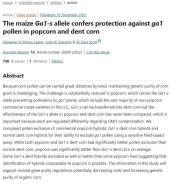posted 9 years ago
I think it would be easier to hold back the tide than to keep the winds from bringing you samples of everything going on at your neighbor's. Math and prevention is not the mindset to go in with. If you have healthy soil and healthy plants and an abundance of fungi holding them together, that healthy ecosystem will devour what blows in on the winds and it will smile. I have a long skinny plot of land, sandwiched in between neighbors who practice the usual pesticide/herbicide/fungicide gardening, but it is not their poison that is encroaching on me, but my healthy ecosystem that is invading theirs.
See, maintaining a sterile, toxic medium in which to grow vegetables and ornamentals requires constant application of those toxics. Skip an application, and all sorts of things are waiting to invade. On my neighbors, they are first colonizers, and as long as they can handle the toxin du jour, they have an unlimited buffet. On my property, invaders are trying to move in to a rough neighborhood, full of potential predators, and they don't do well. You have to realize that permaculture is Nature's straight flush, what millions of years of evolution has created. It's not going to fold to the aces up the sleeve of some chemical farmer. To win, the farmer has to call for a new deck each hand (by sterilizing and plowing the soil) to win over the permaculturalist. He wins when he can bluff with his three aces of pesticide/fungicide/herbicide, bluffing you out before you even fill your hand.
Just call his bluff, pay no attention to his aces, and work on filling your hand: pile up all that biomass and turn it into mounds of fungal hyphae; let the earthworms till your soil until the ground feels like walking on a sponge; let the bee plants go wild and see what happens. I've counted 9 different species of bees and wasps working one small patch of chicory that I had in flower. They know where the welcome sign is.
Once you get your permaculture going, it will be your neighbor who will be on the defensive. He will have to spray to get rid of the volunteer bee plants that keep coming up in his corn. He will have to be on the watch for huitlacoche getting into the rows of corn along your property. And he will wonder why the corn borer is worse the farther he gets from your property.





![Filename: homearialview.jpg
Description: wetland at north, house/pastures mid, woodlot south [Thumbnail for homearialview.jpg]](/t/52616/a/35086/homearialview.jpg)




 3
3

































